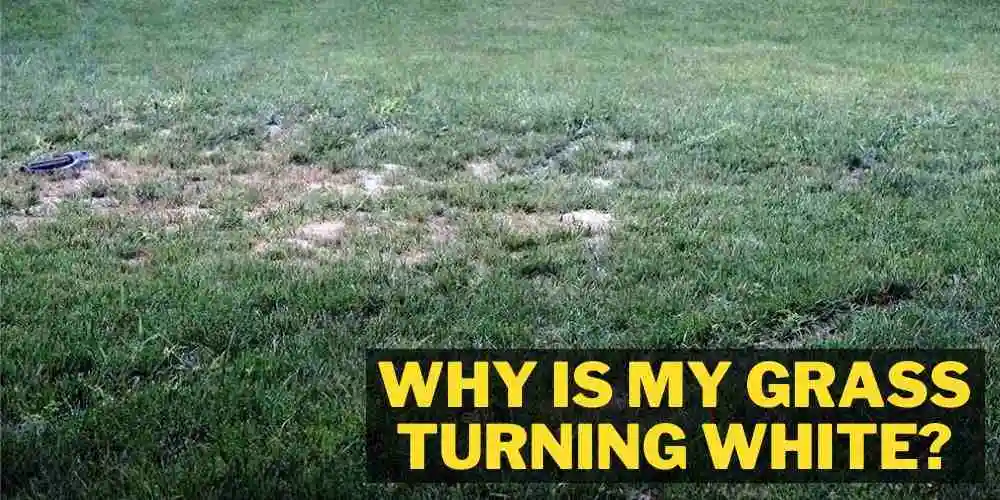Be it a peaceful pastime or a weekly responsibility, maintaining a lush green lawn is a universal task.
But what happens when your trusted lawn mower slows down when cutting, instead of smoothly whizzing about grumpily grinds?
This article aims to help you navigate the myriad of potential issues causing this problem, providing practical solutions to get your mower — and you — back on track through an all-embracing exploration of lawnmower efficiency.

Lawn mower slows down when cutting
The most common causes of a lawn mower slowing down when cutting often revolve around maintenance issues.
Insufficient or poor-quality fuel can lead to deposit build-up in the fuel system, restricting performance. Inadequate air circulation due to a clogged or dirty air filter can choke the mower’s engine, limiting its power.
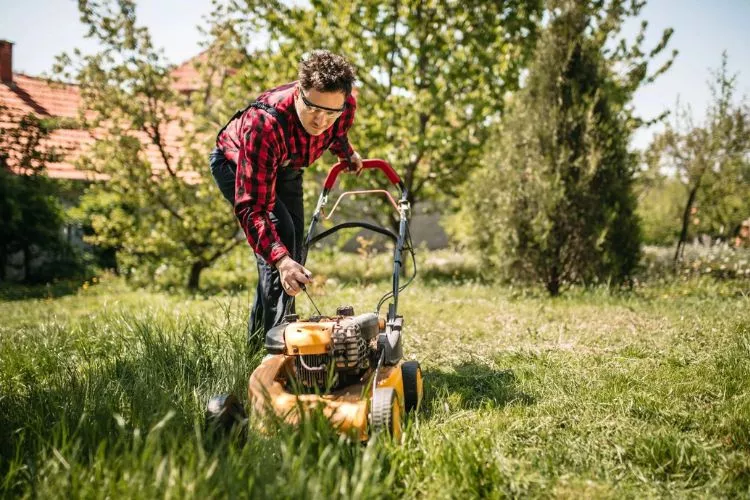
Dull or damaged blades force the mower to work harder, reducing its speed significantly. Grass clippings accumulating under the mower deck also disrupt blade rotation and slow down the machine. Regular maintenance and proactive care can curb these issues and ensure efficient operation.
Causes
- Insufficient or Inappropriate Fuel: Your lawn mower might be picky about what goes into its tank. Using old oil or gasoline can build up deposits in the fuel system, making the mower work harder and slowing down the process.
- Clogged or Dirty Air Filter: Air filters are crucial in efficiently running your lawn mower’s engine. A dirty or clogged air filter impedes the much-needed air flow, limiting the oxygen supply needed for fuel combustion and causing your mower to slow down.
- Dull or Damaged Blades: The mower’s cutting efficiency can be drastically reduced if the blades are dull or damaged. Cutting grass with such blades can cause the machine to work double-time, slowing its pace.
- Build-up of Grass Clippings: Grass clippings can accumulate under the mower deck, impacting the rotation of the blades and slowing down the ambling mower.
- Overheating: Overheating is a less obvious cause. Intense heat can negatively affect the engine’s performance and cause your lawn mower to slow down.
- Belt Problems: If your lawn mower has a belt-driven system, a loose, damaged, or worn-out belt could be a potential cause of the mower slowing down during the cutting process.
- Throttle Cable Issues: The throttle controls the mower’s speed, and if the throttle cable is damaged, loose, or improperly adjusted, it may lead to a reduced performance, causing the mower to slow down.
- Carburetor Issues: Carburetor issues, such as dirt build-up or damaged parts, could disrupt the proper fuel mixture needed for the engine to function efficiently; as a result, the mower may slow down when cutting grass.
- Governor Malfunction: The governor is responsible for maintaining the engine speed as external load changes, like tall grass, are encountered. If it malfunctions, the engine will not adjust the speed properly during increased load, causing the mower to slow down.
Solutions
- Refuel Appropriately: Ensure you use fresh gasoline and oil suitable for your mower type. Regularly check the oil level and replace it if it’s too low or exceedingly dirty.
- Clean or Replace Air Filters: Clean filters should always be a priority. Mowers usually require an air filter change every 25 hours of use or at the start of every mowing season.
- Sharpen or Change Blades: A mower’s performance significantly improves with sharp blades. It’s advisable to sharpen blades at the start of every mowing season or, depending on use, every six months.
- Clean Grass Clippings: Make it a habit to clean the underside of your mower after each use. This ensures that grass clippings don’t accumulate and interfere with the blade movement.
- Cool Down: Lastly, if your mower has been working for an extended period, give it time to cool down before you continue. Overheated engines tend to make the mower sluggish.
- Check and Replace Belts: Inspect the belts regularly for a belt-driven lawn mower. Replace them if they are loose, damaged, or worn to ensure smooth and efficient operation.
- Adjust or Replace Throttle Cable: Examine the throttle cable, tighten it if loose, and adjust it for proper functioning. In case of severe damage, replace it.
- Check and Adjust Governor: Inspect the governor for any signs of malfunction. Ensure it is cleaned and adjusted properly to maintain the engine speed during load changes. You may need professional assistance for more complex governor issues.
Clean and Maintain Carburetor:
- Clean the carburetor and remove any dirt build-up affecting its efficiency.
- Check for damaged parts and replace them if necessary.
- If you are not confident in doing this yourself, consider seeking help from a professional.
Addressing these additional causes can further improve your lawn mower’s performance and prevent it from slowing down when cutting.
How do I know if my lawn mower has a clogged carburetor?
A clogged carburetor can severely affect the performance of your lawn mower. Here are some signs of a clogged carburetor and how you can verify it:

- Difficulty in Starting: A clear indication of a clogged carburetor is if your lawn mower refuses to start or requires multiple attempts. The carburetor plays a critical role in the ignition process, and any hindrances, like blockages, may hinder it from functioning correctly.
- Erratic Engine Performance: If your mower is continuously stalling, sputtering, or not running smoothly, a clogged carburetor might be to blame. Inconsistent engine operation could result from an irregular supply of the gas-air mixture.
- Black, Thick Smoke from Exhaust: Abnormally black, thick, or smoky exhaust can be an alarming signal of a clogged carburetor. This is due to incomplete combustion of the fuel-air mixture, resulting from an obstructed carburetor.
- Decrease in Power: A decrease in power, such as your mower slowing down when cutting grass, can be a tell-tale sign. The carburetor’s role in providing the correct fuel and air mixture is crucial for optimal engine power.
- Overheating of the Engine: A clogged carburetor can cause the engine to overheat due to the imbalance in the fuel-air mixture going into the engine. The improper mixture can lead to the engine working harder, increasing its temperature.
After identifying the symptoms, if you suspect a clogged carburetor, it’s time to investigate further:
- Visually Inspect: Disconnect the spark plug for safety before anything else. Then, remove the air filter to expose the carburetor and look for any visible dirt or debris.
- Check the Float Bowl: The lawn mower’s float bowl is at the bottom of the carburetor. Unscrew it and check for any sediment that may cause blockages.
- Inspect the Fuel Jets and Passages: The fuel jets and passages can become clogged with debris. They should be inspected and cleaned regularly to ensure the proper flow of fuel.
Always remember that dealing with a carburetor requires certain mechanical knowledge and skill. If you’re not confident, consider seeking help from a professional.
Maintenance is the key to keeping your equipment running smoothly. Regularly clean your carburetor and use fresh fuel to avoid these issues.
John Deere lawn mower slows down when cutting: what to do?
If your John Deere lawn mower slows down while cutting, there are a few possible solutions:
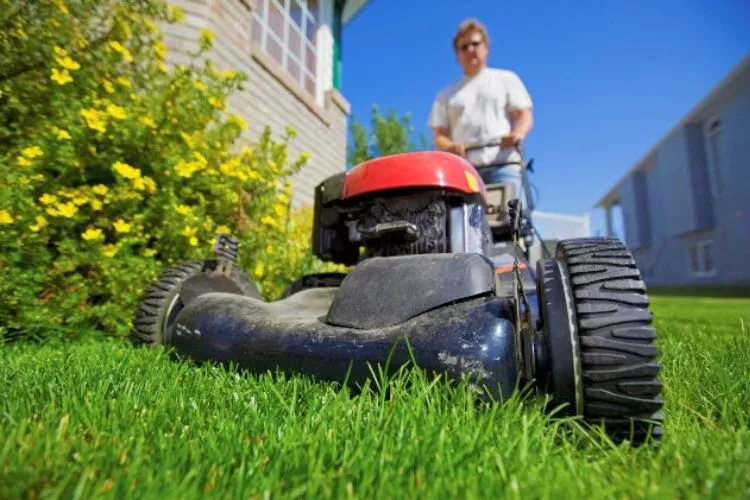
- Inspect and clean the mower’s air filter, as a clogged filter can limit airflow and reduce engine performance.
- Examine the fuel system, including the gas tank and lines, for issues such as old or dirty fuel. Replace or clean as needed.
- Examine the cutting blades and sharpen or replace them if they are dull or damaged, as this could cause the mower to work harder and slow down.
- Check the mower belt if applicable; replace it if worn or damaged.
Regular maintenance and appropriate care will ensure efficient operation and prolong the mower’s life.
Gas lawn mower slows down when cutting: what to do?
When a gas lawn mower slows down during the cutting process, there are some steps you can follow to remedy the issue:
- Check the fuel quality and ensure the mower uses fresh gasoline. Replace old or contaminated fuel, as it can cause the engine to work inefficiently.
- Clean or replace the mower’s air filter since limited airflow can lead to reduced performance.
- Examine the mower blades, and either sharpen or replace them if dull or damaged.
- Ensure that the carburetor functions properly; clean the carburetor, including the jets and float bowl, and make the necessary adjustments.
Maintaining maintenance routines prevents such slowdowns, ensuring an effective mowing experience.
Electric lawn mower slows down when cutting: what to do?
If your electric lawn mower slows down while cutting, there are a few solutions to consider:
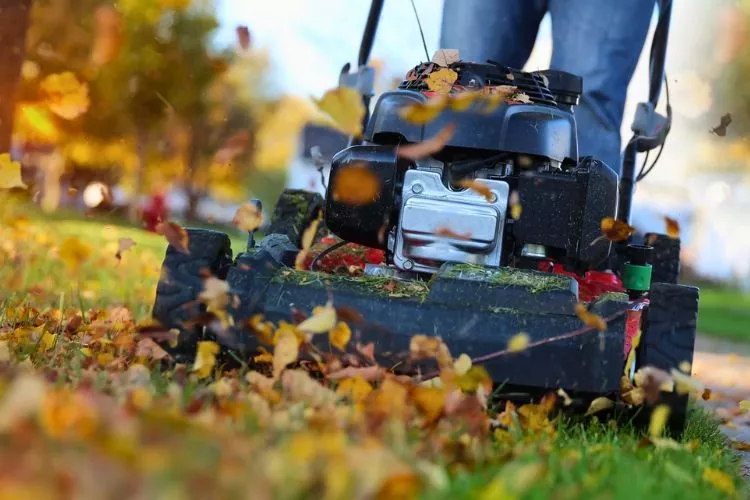
- Inspect the cutting blades and ensure they’re sharp and free of damage. Dull or damaged blades can strain the motor, causing it to slow down. If necessary, sharpen or replace the blades.
- Remove any grass clippings or debris from under the mower deck, as this can impede the rotation of the blades. Unplug or remove the battery before performing this task for safety reasons.
- If applicable, check the mower’s drive belt for any signs of wear or looseness; replace if necessary.
- If the problem persists, consult a professional; the mower might require further electrical troubleshooting.
Regular maintenance will help optimize your mower’s performance and enhance its longevity.
Honda lawn mower slows down when cutting: what to do?
If your Honda lawn mower slows down during the cutting process, take the following steps to address the issue. Examine the lawn mower’s air filter, as a clogged filter might restrict airflow and decrease engine performance; clean or replace the filter as needed.
Next, check the fuel quality and ensure the mower has fresh gasoline, replacing any old or contaminated fuel. Inspect the mower blades for dullness and damage and sharpen or replace them accordingly.
Finally, as Honda mowers may have belt-driven systems, check the mower belt for wear or looseness and replace it if necessary. Regular maintenance will help extend the life of your mower and maintain efficient operation.
Husqvarna lawn mower slows down when cutting: what to do?
Follow these potential solutions to address a Husqvarna lawn mower slowing down during the cutting process:
- Check the air filter to ensure it is clean and functions properly, as limited airflow can reduce overall engine performance.
- Inspect the fuel system for any old or contaminated fuel and replace it with fresh gasoline.
- Examine the mower’s cutting blades for dullness and damage, and sharpen or replace them to maintain optimal performance.
- Inspect the mower’s drive belt and replace it if it shows wear or damage.
Consistent maintenance and care will ensure optimal performance and longevity in your Husqvarna lawn mower.
Craftsman lawn mower slows down when cutting: what to do?
When a Craftsman lawn mower slows down during the cutting process, consider these solutions to help resolve the issue. First, inspect the air filter, as a clogged air filter can limit airflow and decrease engine performance; clean or replace the filter if necessary.
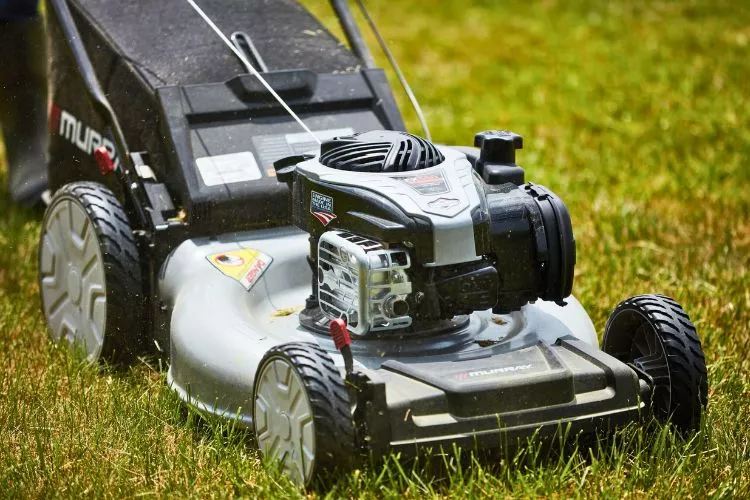
Next, check the fuel quality in the tank, ensuring the mower has fresh gasoline—a crucial factor for proper engine function. Examine the cutting blades for dullness or damage, and either sharpen or replace them to maintain cutting efficiency.
Lastly, inspect the mower belt for wear, damage, or looseness and replace it if needed. Regular maintenance is key to prolonging the life and performance of your Craftsman lawn mower.
Conclusion:
A lawn mower slowing down while cutting grass is not an uncommon issue. It can be attributed to various factors, such as dull blades, clogged filters, or worn-out belts. Regular maintenance and proper usage can significantly prolong your lawn mower’s performance and lifespan.
Knowledge of diagnosing these problems and performing minor repairs can save time and money, leading to smooth and efficient lawn care. It underscores the importance of understanding your garden equipment and ensuring they function at their best.


